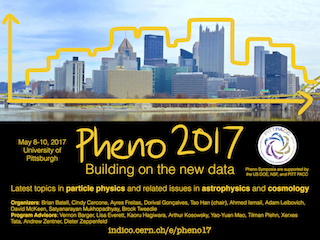Speaker
Description
A future \sqrt{s} = 100 TeV proton-proton collider will have a remarkable capacity to discover massive new particles and continue exploring weak scale naturalness. In this work we will study its sensitivity to two stop simplified models as further examples of its potential power: pair production of stops that decay to tops or bottoms and higgsinos; stops that are either pair produced or produced together with a gluino and then cascade down through gluinos to the lightest superpartner (LSP). In both simplified models, super-boosted tops or bottoms with transverse momentum of order TeV will be produced abundantly and call for new strategies to identify them. We will apply a set of simple jet observables, including track-based jet mass, mass drop and N -subjettiness, to tag the boosted objects and suppress the Standard Model as well as possible SUSY backgrounds. We will also discuss how to use jet observables to distinguish simplified models with different types of LSPs. The boosted top or bottom tagging strategies developed in this paper could also be used in studies of other physics cases for a 100 TeV collider.
